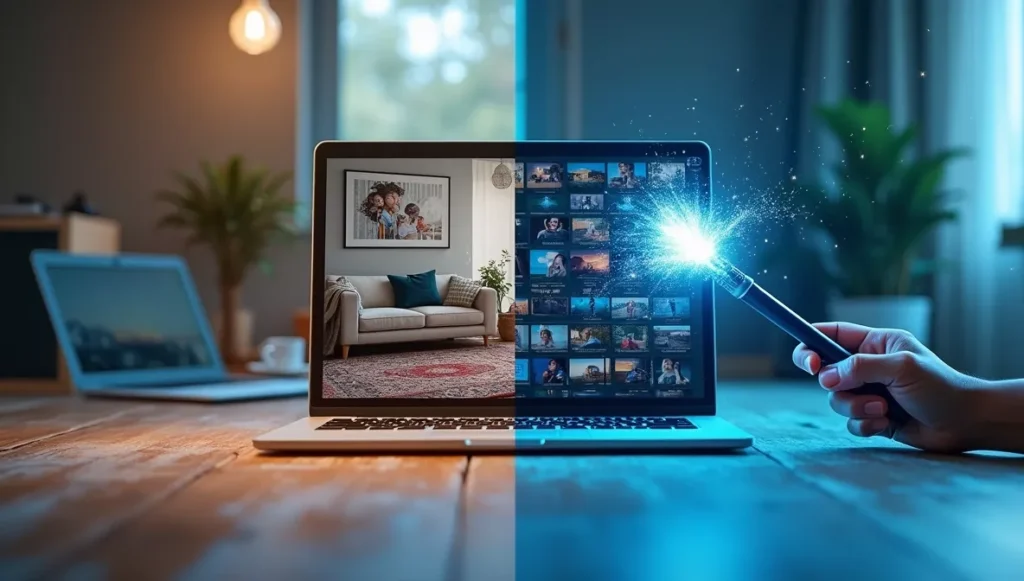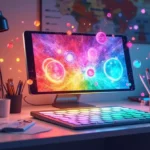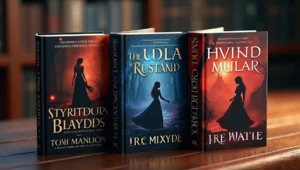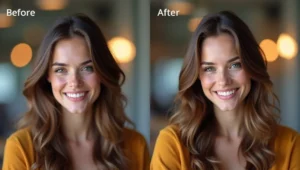The Cover Letter That Changed Everything
Sarah had been applying to jobs for three months. Every single day, she’d send out her resume to five, ten, sometimes fifteen companies. But nothing happened. No calls. No emails. Just silence.
- The Cover Letter That Changed Everything
- What’s a Cover Letter Anyway? (And Why Should You Care?)
- Why Most Cover Letters Are Terrible (Sorry, But It’s True)
- 💖 You Might Also Like
- Enter AI: Your New Best Friend for Job Applications
- The Best AI Tools for Writing Cover Letters
- 1. ChatGPT: The Popular Kid Everyone Knows
- 2. Claude: The Friendly Helper
- ✨ More Stories for You
- 3. Rezi: The Resume and Cover Letter Specialist
- 4. Jasper: The Professional Writer
- 5. Copy.ai: The Quick and Easy Option
- 6. Grammarly: The Polish Machine
- Pairing Your AI Cover Letter with Your Resume: The Secret Sauce
- 🌟 Don’t Miss These Posts
- Keyword Matching
- Telling a Complete Story
- Consistent Tone and Voice
- How to Use AI to Write a Cover Letter (Step-by-Step for Beginners)
- Step 1: Gather Your Information
- Step 2: Choose Your AI Tool
- Step 3: Tell the AI What You Need
- Step 4: Review What the AI Wrote
- Step 5: Ask for Changes
- Step 6: Add Your Personal Touch
- Step 7: Proofread
- Keywords: The Magic Words That Get You Interviews
- Resume Writing Keywords and How They Connect to Your Cover Letter
- Industry-Specific Tips: Using AI for Different Jobs
- For Tech Jobs
- For Creative Jobs
- For Healthcare Jobs
- For Customer Service Jobs
- For Entry-Level Jobs
- Common Mistakes When Using AI for Cover Letters (And How to Avoid Them)
- Mistake 1: Using It Without Customization
- Mistake 2: Making It Too Perfect
- Mistake 3: Not Adding Personal Details
- Mistake 4: Forgetting to Fact-Check
- Mistake 5: Ignoring the Job Description
- Mistake 6: Making It Too Long
- Mistake 7: Using Obvious AI Phrases
- The Human Touch: Why You Still Matter
- Real Examples: Before and After AI
- Example 1: The Boring Opening
- Example 2: The Bland Body Paragraph
- Example 3: The Weak Closing
- Tips for Job Seekers: Beyond Just the Cover Letter
- Your Resume Needs Love Too
- LinkedIn is Your Friend
- The Follow-Up Matters
- Research the Company
- Practice Your Interview Answers
- The Ethics Question: Is Using AI Cheating?
- Free vs. Paid AI Tools: What Do You Really Need?
- Quick Wins: Small Things That Make a Big Difference
- Use the Hiring Manager’s Name
- Mention Something Specific About the Company
- Start with a Story or Hook
- Use Numbers
- Keep Paragraphs Short
- End with Confidence
- Troubleshooting: What to Do When AI Gets It Wrong
- Problem: The Letter Sounds Too Formal
- Problem: It’s Using Words I Don’t Know
- Problem: It’s Too Generic
- Problem: It’s Too Long
- Problem: It Doesn’t Sound Like Me
- Problem: It Made Up Experience I Don’t Have
- The Future: What’s Coming Next for AI and Job Applications
- Your Action Plan: Start Today
- Today (15 minutes):
- This Week (1 hour):
- This Month:
- Final Thoughts: You’ve Got This
- Quick Reference: Your Cover Letter Checklist
Then one day, her friend told her a secret: “Sarah, your resume is great, but your cover letter? It’s putting people to sleep.”
Sarah was confused. She thought cover letters didn’t even matter anymore. Boy, was she wrong.
That’s when she discovered something that changed her job search forever: AI tools that write cover letters. Not just any cover letters, but ones that actually get read. Ones that make hiring managers want to meet you.
Within two weeks of using AI to write her cover letters, Sarah got three interviews. Within a month, she had a job offer.
Want to know her secret? Keep reading.
What’s a Cover Letter Anyway? (And Why Should You Care?)
Let’s start super simple.
A cover letter is like a friendly note you send with your resume. Think of your resume as a list of facts about you: where you worked, what you studied, what skills you have. Your cover letter is different. It’s your chance to say, “Hey, here’s WHY you should hire me” and “Here’s why I’m excited about YOUR company.”
Imagine you’re applying to work at a pizza restaurant. Your resume says you worked at a burger place for two years. Okay, cool. But your cover letter? That’s where you say, “I LOVE making food that makes people smile. At my last job, customers always asked for me by name. I want to bring that same energy to your pizza shop.”
See the difference?
Why Most Cover Letters Are Terrible (Sorry, But It’s True)
Here’s the problem. Most people write cover letters that sound like robots wrote them. They say things like:
💖 You Might Also Like
“Dear Hiring Manager, I am writing to express my interest in the position of Sales Associate at your esteemed organization. I believe my qualifications align well with your requirements.”
YAWN. Did you fall asleep yet?
Hiring managers read dozens, sometimes hundreds of these boring letters every day. They all sound the same. They all use the same boring words. They all make hiring managers want to take a nap.
That’s why most cover letters go straight into the trash. Not because people are mean, but because nobody has time to read boring stuff.
Enter AI: Your New Best Friend for Job Applications
This is where AI comes in to save the day.
AI stands for Artificial Intelligence. But don’t let the fancy name scare you. Think of AI as a really, really smart computer program that can write like a human. Actually, better than most humans.
These AI tools have read millions of cover letters. They know what works and what doesn’t. They know what makes hiring managers say “Wow, I need to interview this person!” and what makes them hit delete.
The best part? Using AI to write your cover letter is super easy. You don’t need to be a tech genius. You don’t even need to be good at writing. The AI does the hard work for you.
The Best AI Tools for Writing Cover Letters
Let’s talk about the actual tools you can use. I’m going to keep this simple and tell you exactly what each one does.
1. ChatGPT: The Popular Kid Everyone Knows
ChatGPT is like that popular kid in school who’s good at everything. It’s made by a company called OpenAI, and millions of people use it every day.
Why it’s great for cover letters:
- It’s FREE to use (there’s also a paid version, but you don’t need it)
- You just tell it what job you’re applying for and it writes your cover letter
- It can rewrite the same letter in different styles
- It remembers what you told it, so you can ask it to make changes
How to use it: Just go to the website, create a free account, and type something like: “Write me a cover letter for a customer service job at Target. I have 2 years of experience working at Walmart.”
Boom. Done. You’ll have a cover letter in 30 seconds.
The catch: Sometimes it sounds a little too formal or fancy. You might need to ask it to “make it sound more friendly and casual.”
2. Claude: The Friendly Helper
Claude (that’s me, by the way!) is another AI that’s really good at writing cover letters. Some people say Claude writes in a warmer, more human way than other AIs.
✨ More Stories for You
Why it’s great:
- Free version available
- Really good at understanding exactly what you want
- Writes in a natural, conversational style
- Can help you match your cover letter to your resume
How it’s different: Claude is really good at asking follow-up questions to make your cover letter better. It’s like having a career counselor who actually cares.
3. Rezi: The Resume and Cover Letter Specialist
Rezi is specifically made for job seekers. That’s ALL it does. It helps you write resumes and cover letters that get past those annoying computer systems companies use to filter applications.
Why it’s awesome:
- Built specifically for job applications
- Helps you use the right keywords (more on this later)
- Has templates designed for different industries
- Can optimize your cover letter to match the job description
The downside: The really good features cost money. But honestly? If you’re serious about getting a job, it might be worth it.
4. Jasper: The Professional Writer
Jasper is like hiring a professional writer, but it’s a computer program. It’s used by marketing people and businesses, but it’s also great for cover letters.
Why people love it:
- Super polished, professional writing
- Can write in different tones (friendly, formal, enthusiastic)
- Really good at selling YOU as the perfect candidate
- Has specific templates for cover letters
The catch: It’s not free. But there’s a free trial you can use.
5. Copy.ai: The Quick and Easy Option
Copy.ai is all about speed. It’s made for people who need good writing FAST.
Why it rocks:
- Super fast (like, 10 seconds fast)
- Has a specific cover letter tool
- Free version works great
- Simple and easy to use
Perfect for: People who need to apply to lots of jobs quickly. Just plug in the info, get your letter, and move on to the next application.
6. Grammarly: The Polish Machine
You might know Grammarly as that thing that fixes your spelling. But did you know it can help write cover letters too? The paid version has AI writing features.
Why it’s useful:
- Fixes all your grammar and spelling mistakes
- Suggests better words and phrases
- Makes your writing sound more professional
- Tells you if your tone is right
Best for: People who want to write their own cover letter but need help making it perfect.
Pairing Your AI Cover Letter with Your Resume: The Secret Sauce
Here’s something most people don’t know: your cover letter and resume need to work together like peanut butter and jelly. They’re a team.
🌟 Don’t Miss These Posts
Think about it. If your resume says you’re a “detail-oriented professional” but your cover letter has typos and mistakes, something doesn’t add up. If your resume lists “creative problem-solving” as a skill, your cover letter should have an example of when you solved a problem creatively.
Here’s how AI helps with this:
Keyword Matching
Remember how I said companies use computer systems to filter applications? These systems look for specific words called “keywords.” If your resume says you have “customer service” skills, your cover letter should also mention “customer service.”
AI tools are AMAZING at this. They can read the job description, find all the important keywords, and put them in both your resume and cover letter naturally.
Example: Let’s say the job description says: “Looking for someone with strong communication skills, experience with Microsoft Excel, and ability to work in a fast-paced environment.”
A good AI will make sure your cover letter mentions:
- How you communicate with customers or team members
- A time you used Excel to solve a problem
- An example of working in a busy, fast-paced situation
And it does this without making it sound forced or weird.
Telling a Complete Story
Your resume is facts. Your cover letter is the story behind those facts.
If your resume says “Increased sales by 25%,” your cover letter can tell the story of HOW you did it. Maybe you came up with a creative idea. Maybe you stayed late to help customers. Maybe you trained other team members.
AI can take the bullet points from your resume and turn them into interesting stories for your cover letter. It’s like turning a grocery list into a recipe.
Consistent Tone and Voice
Here’s something subtle but important: your resume and cover letter should sound like they’re from the same person.
If your resume is formal and professional, your cover letter shouldn’t be super casual and full of slang. If your resume highlights your creative side, your cover letter should too.
AI helps keep everything consistent. You tell it what tone you want, and it makes sure both documents match.
How to Use AI to Write a Cover Letter (Step-by-Step for Beginners)
Okay, let’s get practical. Here’s exactly how to do this, step by step. I’m going to assume you’ve never done this before, so I’ll make it super simple.
Step 1: Gather Your Information
Before you talk to the AI, collect these things:
- The job description (copy and paste the whole thing)
- Your resume
- The company name
- Why you actually want this job (be honest with yourself first)
Step 2: Choose Your AI Tool
Pick one from the list above. If you’re not sure, start with ChatGPT because it’s free and popular.
Step 3: Tell the AI What You Need
Here’s a template you can copy and paste. Just fill in the blanks:
“Write a cover letter for me. I’m applying for a [JOB TITLE] position at [COMPANY NAME]. Here’s the job description: [PASTE JOB DESCRIPTION]. Here’s my relevant experience: [LIST YOUR EXPERIENCE]. I want the letter to sound [professional/friendly/enthusiastic]. Keep it to one page.”
Step 4: Review What the AI Wrote
Read it carefully. Does it sound like you? Does it match the job? Are all the facts correct?
Step 5: Ask for Changes
Don’t like something? Just tell the AI! You can say things like:
- “Make it more casual”
- “Add more enthusiasm”
- “Make the second paragraph shorter”
- “Add an example of when I led a team”
The AI will rewrite it based on your feedback.
Step 6: Add Your Personal Touch
This is SUPER important. Don’t just copy and paste what the AI wrote. Add a sentence or two that’s uniquely you. Maybe a specific reason you love that company. Maybe a personal connection to their mission.
This little personal touch is what makes your cover letter stand out from everyone else using AI.
Step 7: Proofread
Even though AI is smart, it can make mistakes. Read your cover letter out loud. Does it flow naturally? Does everything make sense?
Keywords: The Magic Words That Get You Interviews
Let’s talk about keywords. This is SO important for job seekers.
Keywords are specific words and phrases that hiring managers and computer systems look for in your application. Think of them like magic words that open doors.
Where do keywords come from?
They come straight from the job description. If the job description says they want someone with “project management experience,” then “project management” is a keyword. If they mention “customer satisfaction,” that’s another keyword.
Why AI is amazing with keywords:
AI can read a job description and instantly identify all the important keywords. Then it weaves those keywords into your cover letter naturally. Humans can do this too, but it takes forever and it’s easy to miss important ones.
The keyword mistake everyone makes:
Some people stuff their cover letters with keywords, thinking more is better. So their letter reads like: “I have project management skills and project management experience and I’m great at project management.”
That’s bad. Really bad.
Good AI tools use keywords naturally, in context, so it doesn’t sound robotic. They might say something like: “In my previous role, I led several project management initiatives that improved our team’s efficiency by 30%.”
See? The keyword is there, but it’s part of a real sentence that actually says something meaningful.
Resume Writing Keywords and How They Connect to Your Cover Letter
Your resume and cover letter should share some keywords, but not all of them. Think of it like this:
Resume keywords are technical and specific:
- Software names (Microsoft Office, Salesforce, Adobe)
- Skills (data analysis, customer service, social media management)
- Certifications (CPR certified, Google Analytics certified)
- Measurable achievements (increased sales, reduced costs, improved efficiency)
Cover letter keywords are similar but used in sentences and stories:
- Instead of just listing “customer service,” you write about a time you helped a difficult customer
- Instead of just saying “Microsoft Excel,” you explain how you used Excel to solve a problem
- Instead of listing “team leadership,” you tell a quick story about leading a project
The perfect pairing:
When your resume and cover letter share keywords but present them differently, hiring managers think: “This person really has this skill. They’re not just making it up.”
AI tools can scan your resume, identify the keywords there, and make sure your cover letter supports them with examples and context.
Industry-Specific Tips: Using AI for Different Jobs
Different jobs need different kinds of cover letters. Here’s how to use AI for various industries:
For Tech Jobs
Tech cover letters should be:
- Specific about technologies you know
- Results-focused (metrics and numbers)
- Clear about problem-solving abilities
Tell the AI: “Write a tech-focused cover letter that emphasizes my coding skills and includes specific examples of projects I’ve completed. Use industry terminology but keep it readable.”
For Creative Jobs
Creative industry cover letters should show personality:
- More conversational tone
- Show passion for the craft
- Highlight specific creative projects
Tell the AI: “Write a creative, engaging cover letter that shows my personality and passion for design. Include storytelling elements and make it memorable.”
For Healthcare Jobs
Healthcare cover letters need to be:
- Professional and trustworthy
- Focused on patient care
- Clear about certifications and qualifications
Tell the AI: “Write a professional healthcare cover letter that emphasizes my patient care experience and relevant certifications. Maintain a compassionate but professional tone.”
For Customer Service Jobs
These should highlight:
- People skills
- Problem-solving abilities
- Patience and positive attitude
Tell the AI: “Write a friendly cover letter that shows my people skills and passion for helping customers. Include examples of going above and beyond.”
For Entry-Level Jobs
When you don’t have much experience:
- Focus on enthusiasm and willingness to learn
- Highlight transferable skills from school or other activities
- Show you’ve researched the company
Tell the AI: “Write an enthusiastic cover letter for an entry-level position. I don’t have much work experience, but I have skills from school projects and volunteer work. Emphasize my eagerness to learn.”
Common Mistakes When Using AI for Cover Letters (And How to Avoid Them)
AI is awesome, but people still make mistakes. Here are the big ones:
Mistake 1: Using It Without Customization
Some people generate a cover letter with AI and just send it to every company. Big mistake.
The fix: Always customize each letter for each job. Change the company name, adjust the examples, and make it specific to that position.
Mistake 2: Making It Too Perfect
AI can write really fancy, complicated sentences. Sometimes TOO fancy.
The fix: Ask the AI to simplify. Say “Write at an 8th-grade reading level” or “Make it more conversational.” You want to sound smart, not like a robot.
Mistake 3: Not Adding Personal Details
AI doesn’t know about that time you helped a lost customer find their kid at your retail job, or how your grandma inspired you to work in healthcare.
The fix: Add these personal touches yourself. They’re what make your letter memorable.
Mistake 4: Forgetting to Fact-Check
AI sometimes makes stuff up. It’s weird, but true.
The fix: Always read your cover letter carefully. Make sure all the facts about your experience are accurate. If something seems off, fix it.
Mistake 5: Ignoring the Job Description
People sometimes tell the AI to write a cover letter without giving it the job description.
The fix: ALWAYS include the job description. It helps the AI understand what the employer wants and use the right keywords.
Mistake 6: Making It Too Long
Some AI cover letters go on and on and on.
The fix: Keep it to one page. Tell the AI “Keep it under 400 words” or “Make it one page maximum.”
Mistake 7: Using Obvious AI Phrases
AI loves certain phrases like “I am writing to express my interest” or “my skills align perfectly.”
The fix: Ask the AI to avoid clichés. Say “Don’t use common AI phrases” or “Make it sound more human and natural.”
The Human Touch: Why You Still Matter
Here’s something important: AI is a tool, not a replacement for you.
Think of AI like a bicycle. It helps you go faster and farther than you could on foot. But you’re still the one pedaling. You’re still steering. You’re still deciding where to go.
What AI can’t do:
AI doesn’t know:
- Why you REALLY want this job
- Your personal connection to the company’s mission
- That funny-but-professional anecdote from your last job
- Your unique voice and personality
- Your specific career goals
What YOU bring:
You bring authenticity. You bring truth. You bring the real reasons you’d be great at this job.
The best cover letters mix AI’s writing skills with your personal knowledge and authentic voice.
How to add your human touch:
- Start with AI to get a solid draft
- Add a personal story or detail
- Adjust the tone to match how you actually talk
- Make sure every word feels true to who you are
- Read it out loud – if it doesn’t sound like something you’d say, change it
Real Examples: Before and After AI
Let’s look at some real examples of how AI improves cover letters.
Example 1: The Boring Opening
Before (human-written): “Dear Hiring Manager, I am writing to apply for the Marketing Assistant position at your company. I have experience in marketing and believe I would be a good fit.”
After (AI-improved): “When I saw the Marketing Assistant opening at GreenLeaf Foods, I got excited – not just because I love marketing, but because I’ve been a huge fan of your sustainable packaging initiative for years. My experience growing social media engagement by 150% at my current job has prepared me to help tell your story to even more people.”
See the difference? The second one grabs attention and shows real enthusiasm.
Example 2: The Bland Body Paragraph
Before: “I have strong communication skills and work well with others. I am detail-oriented and organized.”
After: “Last year, when our team faced a major deadline crisis, I coordinated with five different departments to solve the problem. By creating a simple shared tracking system and keeping everyone updated, we finished the project two days early. That’s when I realized I thrive in situations that require clear communication and careful organization.”
Now it’s a story, not just a list of traits.
Example 3: The Weak Closing
Before: “Thank you for your consideration. I look forward to hearing from you.”
After: “I’d love the chance to bring this same problem-solving energy to your team. I’ll follow up next week, but in the meantime, I’m happy to answer any questions. Thanks for taking the time to read my letter.”
The second version is more confident and shows initiative.
Tips for Job Seekers: Beyond Just the Cover Letter
While we’re talking about job applications, let me share some bonus tips that will help your whole job search:
Your Resume Needs Love Too
Your cover letter is only as good as the resume it’s paired with. Use AI to:
- Format your resume cleanly
- Quantify your achievements (turn “helped customers” into “assisted 50+ customers daily”)
- Optimize for keywords
- Write strong bullet points
LinkedIn is Your Friend
Many hiring managers will check your LinkedIn after reading your cover letter. Make sure:
- Your LinkedIn matches your resume
- You have a professional photo
- Your headline is clear and interesting
- You have recommendations from past coworkers or managers
The Follow-Up Matters
After you send your application, wait 5-7 days, then send a polite follow-up email. You can use AI to write this too! Just say something like: “Write a friendly follow-up email checking on my application status for [JOB TITLE].”
Research the Company
AI can help with this too. Ask it: “What should I know about [COMPANY NAME] before an interview?” It can give you talking points about the company’s mission, recent news, and culture.
Practice Your Interview Answers
Once your awesome AI-written cover letter gets you an interview, use AI to practice. Ask it to create common interview questions for your industry and even evaluate your answers.
The Ethics Question: Is Using AI Cheating?
Some people worry that using AI to write a cover letter is dishonest. Let’s talk about this.
Here’s the truth: Using AI to write your cover letter is no different than:
- Using spell-check
- Asking a friend to review your letter
- Hiring a professional resume writer
- Using a template you found online
You’re still providing all the information. You’re still the one with the experience and skills. You’re still the one who will do the job if you get hired.
AI is just helping you present yourself better. It’s a tool, like a calculator or a word processor.
The honest way to use AI:
- Provide accurate information about your experience
- Don’t let AI make up fake accomplishments
- Customize each letter for each job
- Add your own personal touches
- Be yourself in interviews
When it crosses a line:
- If the AI makes up experiences you don’t have
- If you copy someone else’s cover letter into the AI and claim it as yours
- If you let AI write things that aren’t true about you
As long as you’re honest about your real experience and skills, using AI to help you write is perfectly fine.
Free vs. Paid AI Tools: What Do You Really Need?
Let’s talk money. Should you pay for AI tools or stick with free ones?
Free tools are great if:
- You’re on a tight budget
- You only need to write a few cover letters
- You’re comfortable editing and customizing yourself
- You’re just starting your job search
Free options that work well:
- ChatGPT (free version)
- Claude (free version)
- Copy.ai (limited free version)
- Grammarly (basic free version)
Paid tools are worth it if:
- You’re applying to many jobs
- You want industry-specific templates
- You need advanced keyword optimization
- You want help with your whole application package (resume, cover letter, LinkedIn)
- Time is more valuable to you than money
Paid options to consider:
- Rezi ($29/month – but there’s a free trial)
- Jasper ($49/month – free trial available)
- Grammarly Premium ($12/month)
My honest advice: Start with free tools. If you’re applying to a lot of jobs and the free tools feel limiting, then consider upgrading. But most people will do just fine with the free versions.
Quick Wins: Small Things That Make a Big Difference
Here are some small changes that dramatically improve your AI-generated cover letters:
Use the Hiring Manager’s Name
“Dear Hiring Manager” is boring. Find the actual person’s name on LinkedIn or the company website. Then tell the AI: “Address the letter to Jennifer Smith, the Marketing Director.”
Mention Something Specific About the Company
Generic cover letters are obvious. Do 5 minutes of research and find something interesting about the company. Maybe they just launched a new product. Maybe they won an award. Tell the AI to mention this.
Start with a Story or Hook
Instead of “I’m applying for…” start with something interesting. A relevant story. A bold statement. An interesting fact. The AI can create these hooks for you.
Use Numbers
“Increased sales” is boring. “Increased sales by 35% in six months” is impressive. Always include numbers when you can. AI is great at helping you frame your achievements with metrics.
Keep Paragraphs Short
Big blocks of text are hard to read. Keep paragraphs to 3-4 sentences maximum. Tell the AI: “Use short paragraphs and make it easy to scan.”
End with Confidence
Don’t beg for the job. End with quiet confidence. Something like: “I’m confident I can bring the same results to your team, and I’d love to discuss how.” AI can help you strike this balance.
Troubleshooting: What to Do When AI Gets It Wrong
AI isn’t perfect. Here’s how to fix common problems:
Problem: The Letter Sounds Too Formal
Fix: Tell the AI: “Rewrite this in a more conversational tone, like I’m talking to a friendly colleague.”
Problem: It’s Using Words I Don’t Know
Fix: Say: “Simplify this and use more common words. Write at an 8th-grade reading level.”
Problem: It’s Too Generic
Fix: Give the AI more specific information about the job and your experience. The more details you provide, the better the result.
Problem: It’s Too Long
Fix: “Make this half as long and keep only the most important points.”
Problem: It Doesn’t Sound Like Me
Fix: Add your own sentences and phrases. Rewrite parts in your own voice. Use the AI draft as a starting point, not the finished product.
Problem: It Made Up Experience I Don’t Have
Fix: Remove anything that isn’t true. Then tell the AI: “Only include experiences and skills I actually mentioned. Don’t add anything else.”
The Future: What’s Coming Next for AI and Job Applications
AI is getting better every single day. Here’s what’s coming:
Video cover letters: AI tools that will help you script and practice video introductions to attach to applications.
Real-time optimization: AI that analyzes job descriptions and instantly shows you how to improve your application while you’re writing it.
Interview coaching: AI that conducts practice interviews with you and gives feedback on your answers, tone, and body language.
Application tracking: AI that helps you track all your applications, reminds you to follow up, and suggests which companies to prioritize.
Personalization at scale: AI that helps you customize cover letters for dozens of jobs in minutes, not hours.
The bottom line? AI is making it easier for qualified people to present themselves well. That’s good for job seekers, and honestly, it’s good for employers too. They get better applications that are easier to evaluate.
Your Action Plan: Start Today
Okay, you’ve read this far. Now it’s time to actually DO something. Here’s your action plan:
Today (15 minutes):
- Pick one AI tool from this article
- Create a free account
- Find one job you want to apply for
- Copy the job description
This Week (1 hour):
- Use the AI to write your first cover letter
- Customize it with personal touches
- Have a friend read it
- Apply to the job
This Month:
- Apply to at least 10 jobs using AI-written cover letters
- Track which versions get responses
- Improve your approach based on what works
- Follow up on your applications
Remember, looking for a job is hard. It’s frustrating. It’s stressful. But AI can remove at least one big headache: writing good cover letters.
You don’t need to be a great writer anymore. You just need to be honest about your experience, specific about the jobs you want, and willing to add your personal touch to what the AI creates.
Final Thoughts: You’ve Got This
Finding a job is tough. But here’s what I want you to remember:
The cover letter isn’t magic. It won’t get you a job by itself. But it WILL get your resume read instead of deleted. It WILL get you in front of a hiring manager. It WILL give you a chance to show what you can do.
And with AI helping you write it? You’re going to save hours of frustration. You’re going to sound more professional. You’re going to use all the right keywords. And you’re going to spend your time on what actually matters: preparing for interviews and being your awesome self.
Sarah, the woman from the beginning of this article? She’s real. And her story is real too. She stopped wasting hours struggling to write cover letters. She used AI to help her. She added her own personal touches. And she got the job she wanted.
You can too.
Start today. Pick an AI tool. Write your first cover letter. Apply to a job.
Your future boss is out there right now, looking for someone exactly like you. But they need to read your cover letter first to realize it.
Make it count.
Quick Reference: Your Cover Letter Checklist
Before you send any cover letter, check these boxes:
✓ It’s addressed to a specific person (not “Dear Hiring Manager”) ✓ It mentions the company by name ✓ It references specific details from the job description ✓ It includes 2-3 specific examples from your experience ✓ It uses keywords from the job description naturally ✓ It matches the tone and style of your resume ✓ It’s one page or less ✓ It has no spelling or grammar errors ✓ It includes something personal or unique to you ✓ It ends with confidence and includes next steps ✓ It sounds like you (not like a robot) ✓ You’ve read it out loud and it flows naturally
If you can check all these boxes, your cover letter is ready to send.
Now go get that job.
Remember: The best time to start improving your job application was yesterday. The second best time is right now. Don’t wait. Your dream job isn’t going to wait for the perfect cover letter. Good enough is better than perfect. And with AI helping you, “good enough” is actually going to be pretty darn great.
You’ve got this. Go apply to that job you’ve been putting off. Today’s the day.














